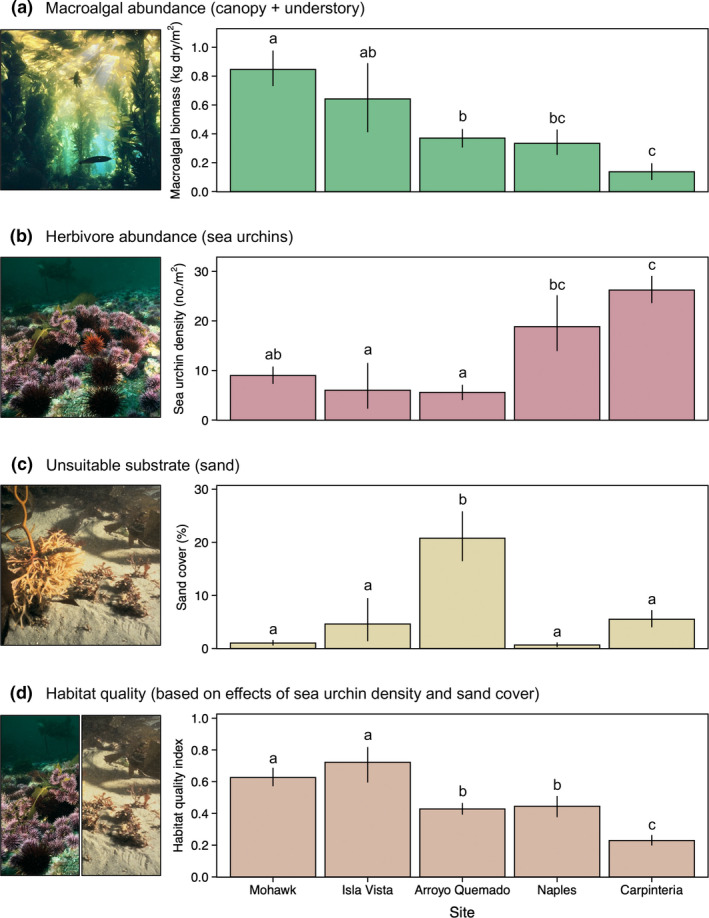FIGURE 1.

(a) A gradient in macroalgal biomass was structured by among‐site variation in (b) the density of herbivorous sea urchins and (c) the cover of sand that is largely unsuitable for the attachment and survival of giant kelp and most understory macroalgae. Habitat quality, based on the effects of sea urchins and sand cover, is shown in panel (d) (rescaled to a maximum of one; see Appendix S3). Data represent 10 years (2008–2018) of seasonal observations from unmanipulated control plots at five kelp forest sites near Santa Barbara, California, USA. Bars and error bars show mean ± bootstrap 95% confidence intervals for seasonal measurements. Letters indicate pairwise differences between sites (p < 0.05). Photo credit: Ron H. McPeak
